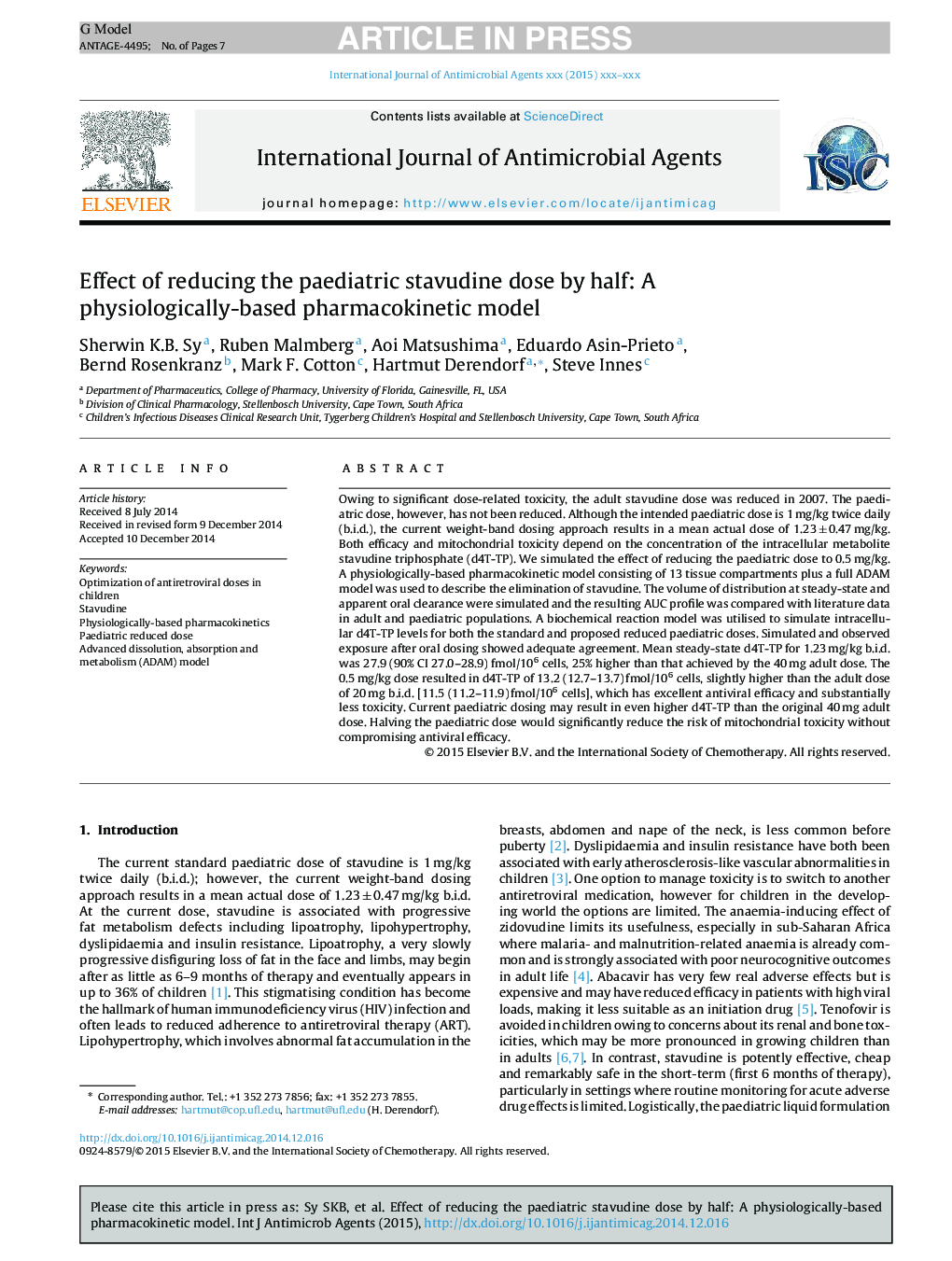| Article ID | Journal | Published Year | Pages | File Type |
|---|---|---|---|---|
| 6117665 | International Journal of Antimicrobial Agents | 2015 | 7 Pages |
Abstract
Owing to significant dose-related toxicity, the adult stavudine dose was reduced in 2007. The paediatric dose, however, has not been reduced. Although the intended paediatric dose is 1 mg/kg twice daily (b.i.d.), the current weight-band dosing approach results in a mean actual dose of 1.23 ± 0.47 mg/kg. Both efficacy and mitochondrial toxicity depend on the concentration of the intracellular metabolite stavudine triphosphate (d4T-TP). We simulated the effect of reducing the paediatric dose to 0.5 mg/kg. A physiologically-based pharmacokinetic model consisting of 13 tissue compartments plus a full ADAM model was used to describe the elimination of stavudine. The volume of distribution at steady-state and apparent oral clearance were simulated and the resulting AUC profile was compared with literature data in adult and paediatric populations. A biochemical reaction model was utilised to simulate intracellular d4T-TP levels for both the standard and proposed reduced paediatric doses. Simulated and observed exposure after oral dosing showed adequate agreement. Mean steady-state d4T-TP for 1.23 mg/kg b.i.d. was 27.9 (90% CI 27.0-28.9) fmol/106 cells, 25% higher than that achieved by the 40 mg adult dose. The 0.5 mg/kg dose resulted in d4T-TP of 13.2 (12.7-13.7) fmol/106 cells, slightly higher than the adult dose of 20 mg b.i.d. [11.5 (11.2-11.9) fmol/106 cells], which has excellent antiviral efficacy and substantially less toxicity. Current paediatric dosing may result in even higher d4T-TP than the original 40 mg adult dose. Halving the paediatric dose would significantly reduce the risk of mitochondrial toxicity without compromising antiviral efficacy.
Keywords
Related Topics
Life Sciences
Immunology and Microbiology
Applied Microbiology and Biotechnology
Authors
Sherwin K.B. Sy, Ruben Malmberg, Aoi Matsushima, Eduardo Asin-Prieto, Bernd Rosenkranz, Mark F. Cotton, Hartmut Derendorf, Steve Innes,
